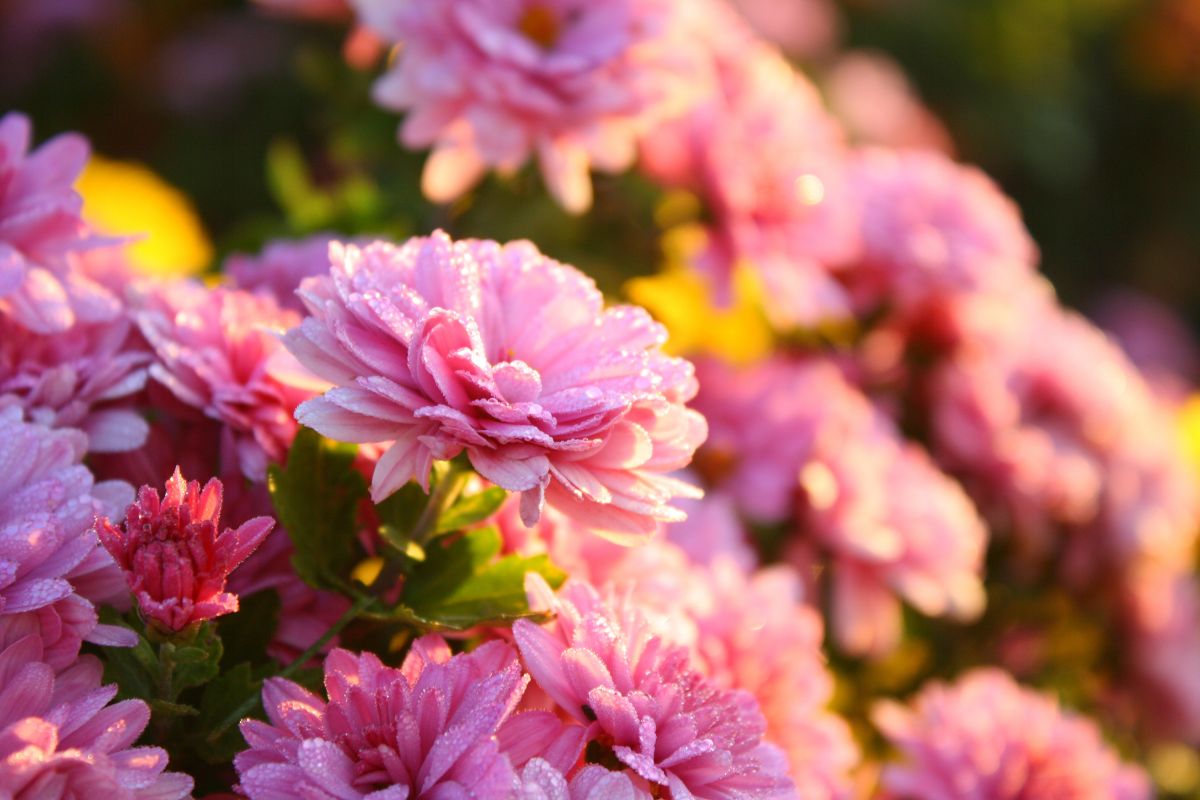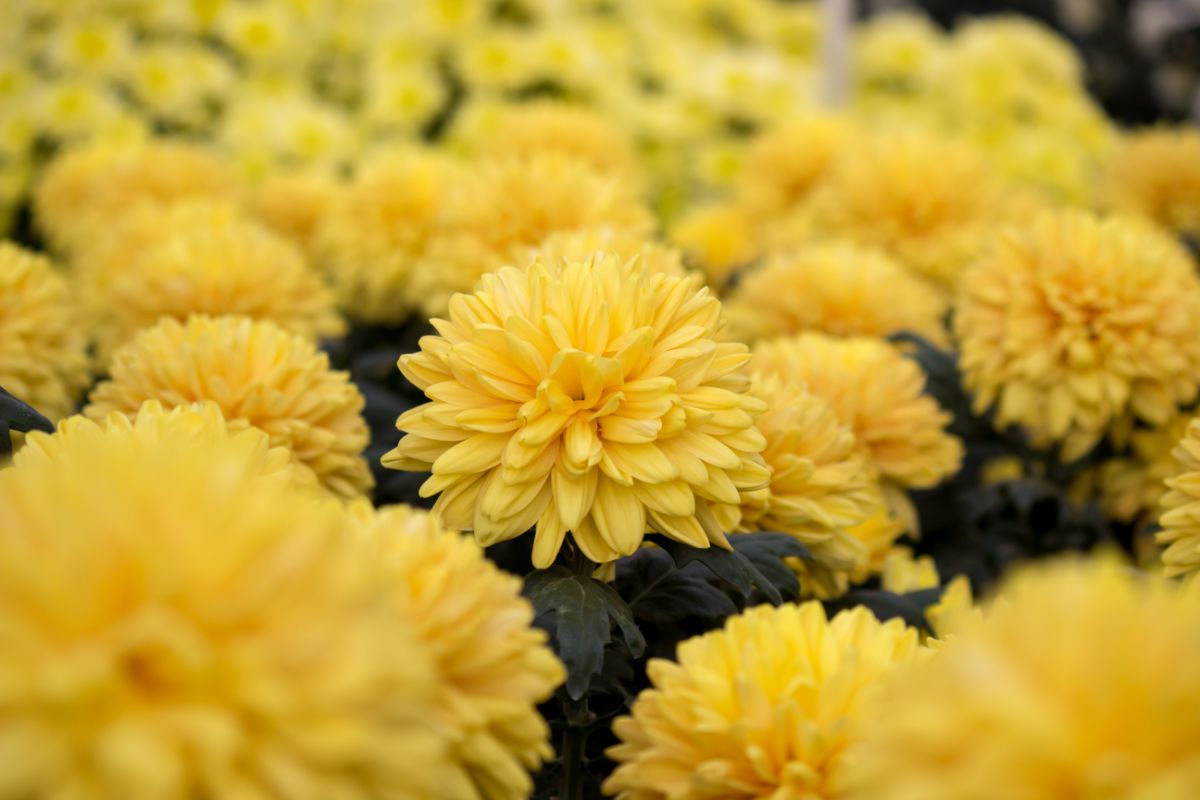Whether you’re a seasoned gardener or a budding horticulturist, at some point, you’re bound to encounter the sight of wilted, lifeless mums in your garden.
Mums, short for Chrysanthemums, are a favourite amongst British gardeners for their vibrant autumnal hues and hardy nature. However, like all plants, mums can struggle under adverse conditions or poor care.

Fortunately, with the right approach and some patience, you can breathe new life into your flagging mums.
I’ve tackled my fair share of problems with my own mums, so in this article, I’ll explore how to revive your mum’s flowers, ensuring that your garden stays bursting with colour and life.
Identifying The Problem With Your Mums
First things first: it’s crucial to correctly identify the problem. If your mums are wilting or browning, the issue could be due to several reasons including overwatering, underwatering, inadequate light, or disease. Here’s how to identify these common problems:
- Overwatering: Mums do not appreciate wet feet! If your mums’ leaves turn yellow or brown and start to drop, or if the blooms begin to wilt, you may be overwatering. Check the soil. If it’s constantly soggy, it’s time to cut back on water.
- Underwatering: On the other end of the spectrum, not giving your mums enough water will cause them to wilt, and their leaves may crisp up and turn brown. Check the soil’s moisture by poking your finger about an inch into it. If it’s dry, your mums need more water.
- Inadequate Light: Mums need plenty of sunlight. If your mums are leggy (long, thin, and sparse), they might not be getting enough light. Remember, mums generally require at least six hours of sunlight each day.
- Disease: If your mums have discoloured or spotted leaves and aren’t responding to changes in care, they might have a fungal or bacterial disease. In this case, you’ll need to take some additional steps to save them.
How Do You Bring Mums Back To Life?
Once you’ve identified the issue, it’s time to take steps to remedy the problem. Here’s what you can do:
Correct Watering Issues
For overwatering, reduce the frequency of watering but don’t let the soil completely dry out.
For underwatering, make sure to water your mums thoroughly, but always let the top inch of the soil dry out between watering. This way, you ensure that your mums’ roots have access to both water and oxygen, which they need to stay healthy.
A good rule of thumb is to water deeply but infrequently.
Adjust Light Conditions
If your mums aren’t getting enough sunlight, consider relocating them to a sunnier spot.
Remember, at least six hours of sunlight is necessary for mums to bloom properly. If moving your mums isn’t possible, you might need to use supplemental grow lights, particularly during the darker winter months.
Manage Diseases
If your mums have a disease, remove the affected parts immediately to prevent it from spreading.
You may also consider using a fungicide or bactericide, following the product instructions carefully.
Sometimes, if the disease is too advanced, you might need to remove and dispose of the entire plant to protect other plants in your garden.
Boost Your Mums With Fertiliser
Mums are heavy feeders and will benefit from regular fertilising. A balanced fertiliser (like a 10-10-10 or 20-20-20) will provide mums with the nutrients they need to grow and bloom.
Apply the fertiliser according to the package instructions throughout the growing season, usually from spring to late summer.
Pruning And Deadheading
Regular pruning can help your mums produce more flowers and maintain a neat, compact shape. Cut back the stems to about 1/3 of their length in early summer. Additionally, deadhead spent flowers throughout the blooming season to encourage more blooms.
Overwintering Mums
Mums can be tender, and a harsh UK winter can cause significant damage. To protect your mums, cut the dead stems back to the ground in late autumn and mulch around the base with straw or wood chips.
This will provide an extra layer of insulation during the cold winter months.
Reviving Mums For Indoor Display
If you have a mum plant that’s been used for indoor display and is now wilting, don’t throw it away!
These mums can often be revived and planted in the garden. First, place the plant in a bright location out of direct sunlight and water it thoroughly. After a few days, when the weather is mild, plant it outside following the same planting techniques we discussed earlier.

How To Ensure You Have Healthy Mums
The above steps can help you revive mums, but the best thing to do is to understand the care they need from the off.
I’ve included some helpful tips below:
Appropriate Planting Technique
Healthy mums start with the right planting.
When planting mums, dig a hole twice as wide as the root ball and just as deep. Place the mum in the hole and backfill with soil, pressing firmly around the plant. Ensure the crown of the mum (where the stem meets the roots) is level with or slightly above the ground.
This method ensures that the roots have room to spread and grow, providing a strong foundation for your plant.
Understanding Soil Requirements
Mums prefer well-drained soil with a pH between 6.0 and 7.0. Heavy clay or compacted soils can be improved by adding organic matter like compost, peat moss, or well-rotted manure.
These amendments improve the soil structure, promote drainage, and add nutrients.
Mulching For Moisture Retention And Weed Control
Mulching is not only beneficial for overwintering mums; it also helps maintain soil moisture and keeps weeds in check during the growing season.
Organic mulch such as straw, shredded bark, or compost can be used. Remember to keep the mulch a few centimetres away from the stems to prevent rot.
Implementing Companion Planting
Mums are great companion plants as their strong scent can deter many common garden pests. Plant mums alongside plants that suffer from pest problems, or mix them in with your vegetable garden for an organic pest control solution.
Plus, they’ll add a pop of colour among your vegetables!
Recognising Pests And Diseases Early
Mums can occasionally be bothered by pests such as aphids, leaf miners, and spider mites.
Regular inspection of your mums can help you catch these pests early. Non-toxic methods like insecticidal soaps or introducing beneficial insects (like ladybugs) can be effective control measures.
Creating A Year-Round Mum Display
Mums are famous for their autumn show, but with careful selection and planning, you can enjoy their blooms from spring right through to the first frosts.
Early-season mums can start blooming in late spring, mid-season mums in late summer, and late-season mums carry on the show into autumn.
Final Thoughts
In summary, reviving mums requires keen observation to identify the problem and the application of appropriate remedies. With a little love and care, your mums can bounce back to their vibrant best, gracing your garden with their striking display of autumnal hues.
Remember, gardening is as much about patience and learning as it is about results. Don’t be disheartened if your first few attempts don’t work out as expected. Keep trying, keep learning, and soon, your garden will be a testament to your growing green thumb. Happy gardening!
- Can You Grow Bell Peppers Indoors? A Guide For New Gardeners - November 14, 2023
- Composting Basics: Can You Compost Mushrooms? - November 6, 2023
- A Gardener’s Guide To Growing Carrots In Raised Beds - November 1, 2023



